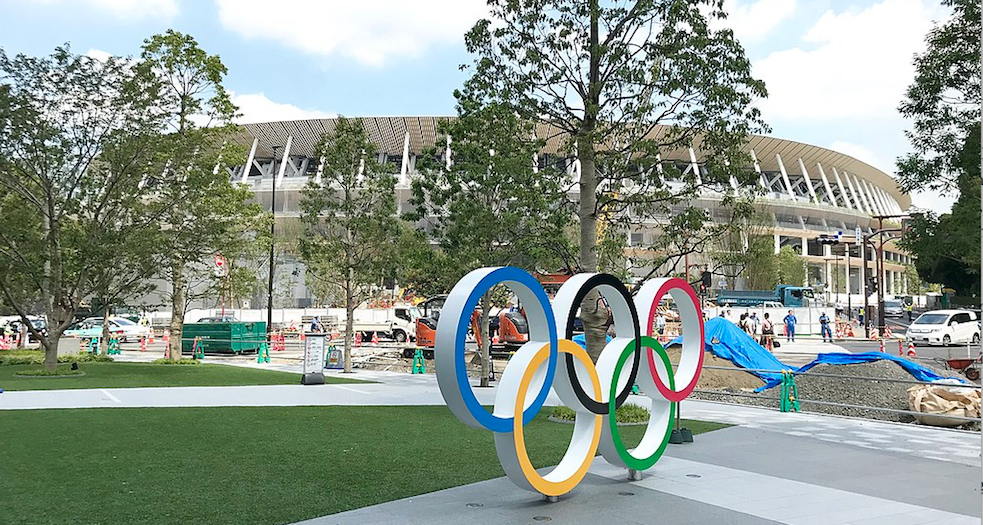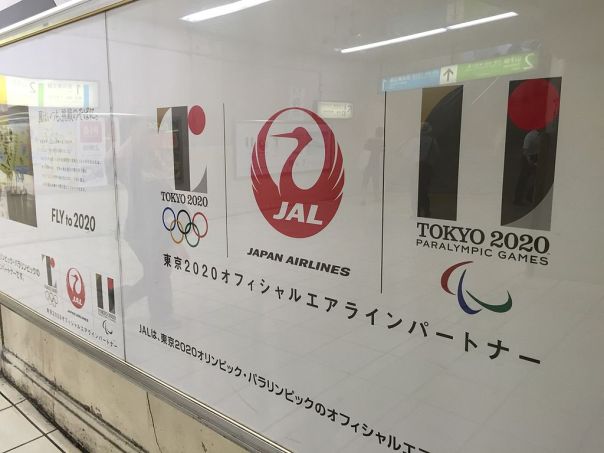
The wrong crisis stopped the Olympics
Posted: 6th April 2020
Posted on April 5, 2020 by beyondnuclearinternational

Radiation risks couldn’t kill the Games, but Covid-19 has
The Japanese government allowed 50,000 people to cluster around the Olympic flame, then hesitated to postpone the Games, until the IOC (and a reluctant Abe) called them off until 2021. Now those concerned about the persistent radiological contamination, which could harm athletes and spectators, have one more year to organize to stop the Tokyo Olympics altogether.
By Linda Pentz Gunter
On Saturday, March 21, 50,000 people queued up at Sendai station to see the Olympic flamedisplayed in a cauldron there. Packed together, not all of them wearing masks, the eager spectators waited as long as three hours to glimpse a flame that should have been extinguished in Japan months ago.
Sendai is just 112 kilometers up the Japanese coast from the stricken Fukushima-Daiichi nuclear reactors that exploded and melted down on March 11, 2011.
Around the same time that those 50,000 people, and the authorities who govern them, failed to take the novel coronavirus pandemic seriously, Japan’s prime minister, Shinzo Abe, was making lukewarm noises about maybe possibly postponing the Olympic Games.
After some skillful negotiating designed to spare Japan embarrassment, that decision was finally made on March 24, when the International Olympic Committee, and the Abe government, each announced that the Games would be postponed until the summer of 2021.

The 50,000 who queued to see the Olympic torch in Fukushima will not see Japanese Olympians or any others this summer. (Photo: Kyriazis/Creative Commons)
Yes, it was beyond stupidity to have continued contemplating an event that would have brought tens of thousands of corona-carrying athletes and spectators to Tokyo and beyond. But it was worse that the persistent radiological contamination of Japan in the now 9-year long aftermath of the Fukushima nuclear disaster didn’t cancel the Games months ago. Or better still, disqualify Japan’s bid in the first place. Things in Japan won’t be significantly better in that regard one year from now. But radiation remains untouchable as a topic.
Japan needed the Games for one compelling reason; to cover-up and sanitize the world’s worst, or second worst, nuclear disaster — arguments still abound as to whether Fukushima will end up being worse than the 1986 Chernobyl nuclear accident in Ukraine, whose long-term health effects now pass down generations.
That’s why Japan gave the Games, the “Recovery Olympics” moniker, to prove that Fukushima wasn’t all that bad after all and that everything is back to normal. Which is, of course, a big and unforgivable lie.
Just to press their point, the Japanese Olympic committee had the torch relay start in Fukushima Prefecture, and the opening event of the Games was to have been a women’s softball match between Japan and Australia, also played in Fukushima. (Australia, along with Canada, announced it would boycott the Games, before the postponement announcement was made).
Wrote Shaun Burnie of Greenpeace International in early February, before the added coronavirus threat became apparent: “The route of the Olympic Torch relay in all the municipalities of Fukushima prefecture includes the districts of Iitate, Namie, and Okuma where Greenpeace Japan’s Nuclear Monitoring & Radiation Protection Team has discovered radioactive hotspots, both in the open areas as well as in the remaining radiation exclusion zones, that remain too high even by revised governmental standards.”
Burnie was featured in an HBO documentary on the topic in January.

No one will be flying to the Tokyo Olympics in 2020, but the Games are still scheduled in radiologically contaminated Japan for 2021. (Photo: Masaru Kamikura for Wikimedia Commons)
The refusal to cancel the Games because of the radiation risks prompted a group in Japan called Citizens’ Group for Appealing against Danger of Tokyo Olympics, to produce a book warning against going forward. What Endangers Tokyo Olympics — Clear and Present Radioactivity and Health Damage, details a host of reasons to have called off the event long before the cancelation was forced on the Japanese government by the covid-19 pandemic. (The book is in Japanese but there is an introductory summary in English.)
The book is edited by Etsuji Watanabe, a member of ACSIR (Association for Citizens and Scientists Concerned about Internal Radiation Exposure) who also relates that activists opposing the Olympics have faced harassment by police.
The book urges athletes, visitors and spectators planning to attend the Tokyo Olympics not to trust any Japanese government propaganda “claiming that Fukushima and Tokyo ‘are 100% safe now’, ‘have no risk of radiation exposure’, or ‘radiation exposure won’t cause any health effects’.”
The authors ask that people “recognize the real risks of radiation exposure from visiting the Fukushima and Kanto regions including Tokyo, even for short stays, and to reconsider their plans of attending the Tokyo Olympics by applying the precautionary principle.”

Things are by no means all cleaned up and back to normal in Fukushima. (Photo: International Federation of Red Cross and Red Crescent Societies)
The authors hoped that by drawing attention to these risks, many people, especially the international community, would start to pay attention to the heartless actions of the Japanese government who are masking the termination of all financial support for Fukushima evacuees behind a large scale mass-media propaganda smokescreen. The financially forced return of Fukushima evacuees to still contaminated areas where they face radiation exposures as high as 20mSv/ year is, the authors say, tantamount to ”a crime against humanity”.
And they add: “Based on the Japanese government risk factors, though greatly underestimated, the early-death rate for returnees in lifetime is estimated at 5-15%.”
“The coronavirus death rate is about 4% world average, some lower, some higher,” observed Beyond Nuclear’s radiation and health specialist, Cindy Folkers. “Compare that to the 5-15% death rate Japan is demanding its citizens endure.”
Despite this, Japanese authorities and others have routinely downplayed the risks of radiation exposure, never wavering from their claim that the levels are “low”. But beyond the persistent radiological contamination, there is the additional risk of exposure to errant “hot particles” — such as those detailed in Folkers’s earlier story on Beyond Nuclear International.
These could, Watanabe says, “entail so serious a biological danger or 4,500 times that of the external exposure, that only one small particle, say with 1Bq in each, breathed and deposited in one’s lung, could cause a lifetime threat to one’s health.”
It is now even emerging that authorities covered up Japan’s own covid-19 epidemic in an effort to keep the Olympic Games on track. This has effectively sacrificed yet more innocent lives in the name of secrecy and reputation.
These ever-present dangers — far worse of course for the permanent residents of Japan than the temporarily visiting Olympic fans and competitors — were never enough to prompt any kind of rethink from any country about sending their athletes or spectators to the Tokyo Olympics.
Now the coronavirus has given activists one more year to organize around stopping the Tokyo Games altogether.
Headline photo: the now dormant National Olympic Stadium, by Tokyo-Good for Wikimedia Commons.